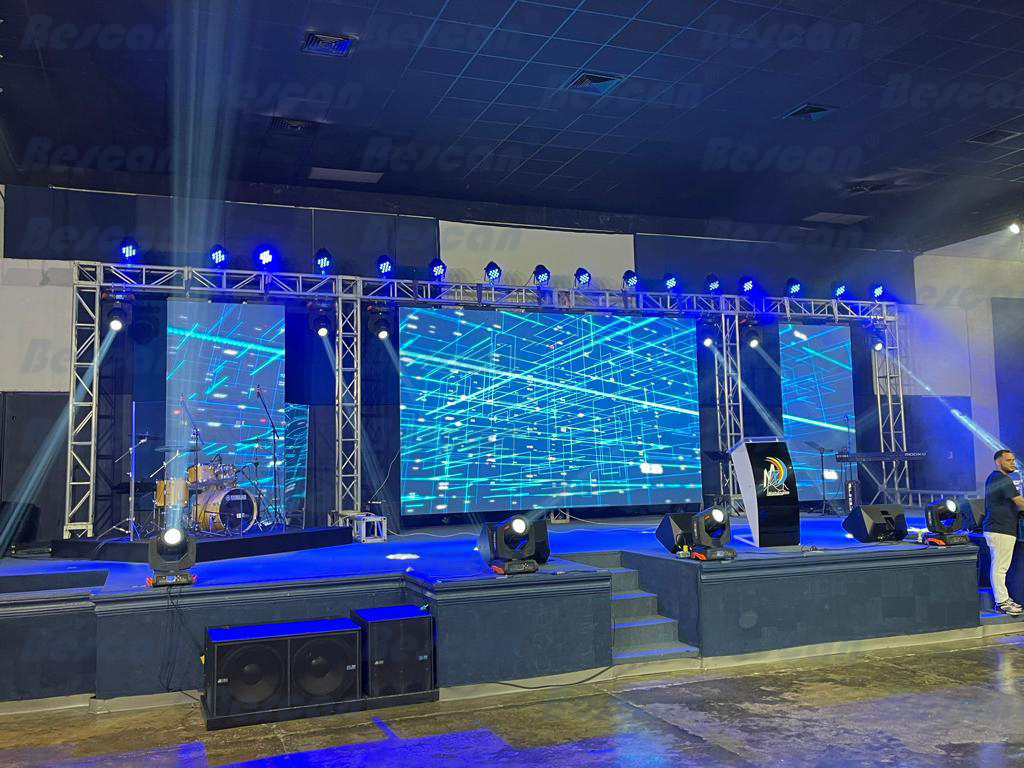Configuring an LED screen can be a complex task, requiring careful planning and preparation to ensure optimal performance and longevity. Whether you are setting up an LED screen for an event, a business display, or any other application, following these essential steps before configuration can help you avoid common pitfalls and achieve the best results.

1. Define Your Objectives
Before diving into the technical aspects of LED screen configuration, it’s crucial to clearly define the purpose and objectives of your display. Consider the following questions:
- What is the primary goal of the LED screen (advertising, information dissemination, entertainment, etc.)?
- Who is your target audience?
- What type of content will you display (videos, images, text, interactive content)?
- What is the ideal viewing distance and angle?
Having a clear understanding of your objectives will guide your choices regarding screen size, resolution, and other technical specifications.
2. Choose the Right Location
The location of your LED screen is a key factor that influences its effectiveness. Here are some considerations:
- Visibility: Ensure the screen is placed in a location where it is easily visible to your target audience. Avoid obstructions and consider the height and angle of installation.
- Lighting Conditions: Evaluate the ambient lighting conditions. For outdoor screens, consider the impact of sunlight and choose screens with higher brightness levels. For indoor screens, ensure there is no direct glare that could affect visibility.
- Weather Protection: For outdoor installations, ensure the screen is weatherproof and can withstand environmental conditions such as rain, wind, and extreme temperatures.
3. Determine the Screen Size and Resolution
Choosing the right screen size and resolution is critical to achieving the desired visual impact. Consider the following:
- Viewing Distance: The optimal resolution depends on the viewing distance. For closer viewing distances, a higher resolution (smaller pixel pitch) is necessary to ensure sharp images.
- Content Type: The type of content you plan to display will also influence your choice. Detailed graphics and high-definition videos require higher resolutions.
4. Assess Structural Requirements
LED screens can be heavy and require robust structural support. Before installation, assess the following:
- Mounting Options: Determine whether the screen will be wall-mounted, freestanding, or suspended. Ensure the mounting structure is capable of supporting the weight of the screen.
- Structural Integrity: For large or outdoor screens, conduct a structural analysis to ensure the installation site can bear the load and withstand environmental stresses.
5. Plan Power and Data Connectivity
Reliable power and data connectivity are essential for the smooth operation of your LED screen. Consider the following:
- Power Supply: Ensure a stable power supply with adequate capacity to handle the screen’s power requirements. Consider using backup power sources to prevent downtime.
- Data Connectivity: Plan for reliable data connections to deliver content to the screen. This may involve wired or wireless connections, depending on the installation site and content management system.
6. Content Management System (CMS) Selection
Choosing the right content management system is vital for efficient content delivery and control. Look for a CMS that offers:
- User-Friendly Interface: Ensure the CMS is easy to use and allows you to schedule and manage content effortlessly.
- Compatibility: Confirm that the CMS is compatible with your LED screen’s hardware and software.
- Remote Access: Opt for a CMS that allows remote access, enabling you to update content from anywhere.
7. Testing and Calibration
Before going live, thoroughly test and calibrate your LED screen to ensure optimal performance. This includes:
- Color Calibration: Adjust the screen’s color settings to ensure accurate and vibrant color reproduction.
- Brightness and Contrast: Set the appropriate brightness and contrast levels to suit the ambient lighting conditions.
- Content Testing: Display sample content to check for any issues such as pixelation, lag, or alignment problems.
8. Plan for Maintenance and Support
Regular maintenance is essential to keep your LED screen in top condition. Develop a maintenance plan that includes:
- Routine Inspections: Schedule regular inspections to identify and address any potential issues before they become major problems.
- Cleaning: Keep the screen clean and free from dust and debris to maintain optimal image quality.
- Technical Support: Ensure access to reliable technical support for troubleshooting and repairs.
Conclusion
Proper preparation is the key to successful LED screen configuration. By defining your objectives, choosing the right location, determining the appropriate screen size and resolution, assessing structural requirements, planning power and data connectivity, selecting a suitable content management system, testing and calibrating the screen, and planning for maintenance and support, you can ensure a smooth and successful LED screen installation that meets your goals and delivers a captivating visual experience.
Post time: Jul-11-2024

